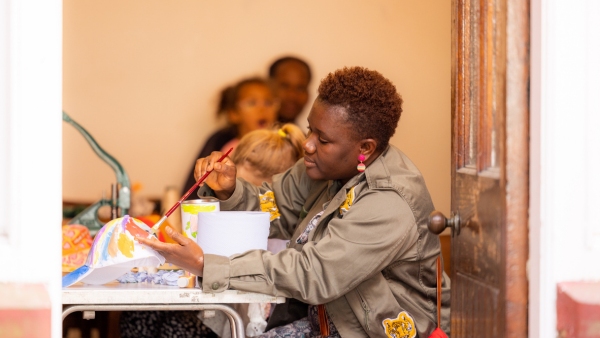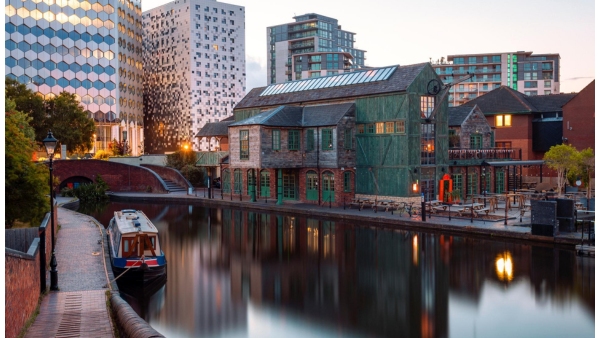I spoke last night at an ACEVO event on civic engagement. I left late and got hopelessly lost behind Liverpool Street station. So by the time I arrived in the three quarters empty room I was in a foul mood. This was only exacerbated by the idealism and cheeriness of the panel members, keynote Trevor Phillips, Chair of the ECHR, Baroness Jill Pitkeathley OBE and Stephen Burke, CEO of Counsel and Care. They were all terribly in favour of civic engagement. So being a mature, responsible, thoughtful person I arbitrarily decided I would be against it for the night.
What, I said, is the point of civic engagement? Some say it is necessary for democratic accountability but citizens and voters don’t seem to have a problem mobilising when they want to change or stop something. Whether it’s the turnout in the US elections or local campaigns against post office closures, people get moving when they feel they need to. It is not clear that we need to maintain a high background level of engagement in order to foster these interventions.
Another argument says civic engagement is necessary to ensure we get good policy decisions. Well, up to a point. I am all in favour of innovative forms of deliberation like Planning for Real or citizens’ juries (proper ones, not the phoney versions organised last year by the Government), but these are intensive processes which are essentially about taking people out of the community and turning them into experts for the day. The benefits of engaging the wider population (who rarely think about such things and who tend to be suspicious of change) is less clear. That’s why mass societies developed representative democracy.
A third argument is that civic engagement brings communities together and makes them stronger. But in reality civic mobilisation is often about conflict within communities and exclusion. Baroness Pitkeathley positively cited two examples of effective civic engagement around her weekday home in Islington. The first was to establish a residents’ parking zone, the second was to close down a rowdy pub. But, as I pointed out to her, in both cases the community was mobilising to exclude outsiders. This may be good for the community but what about the wider social good – where will the non resident drivers park now, have the pub goers moved on to a community even less able to cope with their exploits?
A fourth argument goes back to the civic republican tradition asserting that civic engagement is simply part of living the good life as a good citizen. I sympathise with this view. But to what extent is my claim that civic engagement is good for you any more valid than someone else’s claim that meditation, eating spinach or wearing crystals is good for you? And, I said, building ever stronger bridges with my audience of third sector CEOs, if civic engagement is so great, how come so many charities try to keep their members and lay activists at arm’s length?
By the time I had finished my rant, everyone in the room was feeling less cheerful but my bad mood had almost gone. So it was time to be more constructive. The point about civic engagement is that it is an important part of the solution to a specific problem. Rather than praise engagement as a universal good in itself, we should see it as an often essential part of what cultural theorists (yes, them again) call a clumsy solution. In his recent book ‘Organising and Disorganising’, Michael Thompson (speaking here on December 4th) cites the example of the relocation of Arsenal football club as an exemplary clumsy solution. He argues that the right outcome – the building of the Emirates Stadium on derelict ground close to Highbury – was possible because the search for a solution involved the hierarchical actor (the Council), the individualist actor (the Club) and the egalitarian actor (the Residents’ Association). Civic engagement was a powerful part, but only a part, of a solution to a particular problem.
It is by understanding the contribution civic engagement can make to clumsy solutions, rather than simply extolling it as a virtue in itself, that we can best develop our ideas and practice.
Related articles
-
Open RSA knowledge standards
Alessandra Tombazzi Tom Kenyon
After investigating ‘knowledge commons’, we're introducing our open RSA standards and what they mean for our practice, products and processes.
-
RSA Catalyst Awards 2023: winners announced
Alexandra Brown
Learn about the 11 exciting innovation projects receiving RSA Catalyst funding in our 2023 awards.
-
Investment for inclusive and sustainable growth in cities
Anna Valero
Anna Valero highlights a decisive decade for addressing the UK’s longstanding productivity problems, large and persistent inequalities across and within regions, and delivering on net zero commitments.




Be the first to write a comment
Comments
Please login to post a comment or reply
Don't have an account? Click here to register.